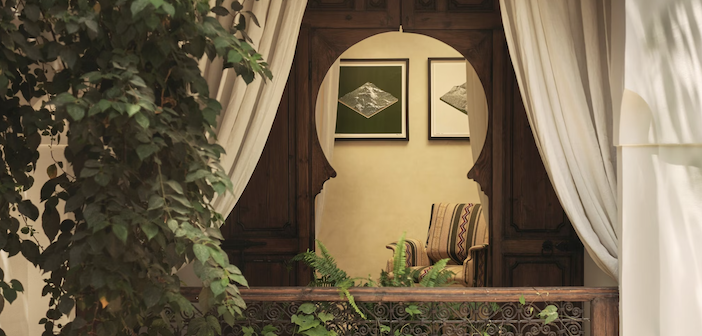It may be on Europe’s doorstep, but landing in Marrakesh after a short flight from London feels like entering another world – a land of steaming souks and narrow alleys, honking donkeys and tinkling fountains. Marrakesh has no airs and graces; the city is blazingly and unashamedly itself. There’s a rough-around-the-edges wildness to it, and a tolerance towards illicit pleasures, that has long attracted counter culture thrill-seekers.
Keen to evoke the spirit of the city’s hedonistic heyday in the ‘60s is boutique hotel IZZA, which recently opened its carved chestnut doors to guests. Hidden down an unassuming side street in the old medina, the hotel’s 14 rooms are named after freewheeling creatives, from beat writers Jack Kerouac and Allen Ginsberg, to singers Grace Jones and Marianne Faithful, who came to Morocco in search of Orientalist mystique and made Marrakesh their playground.
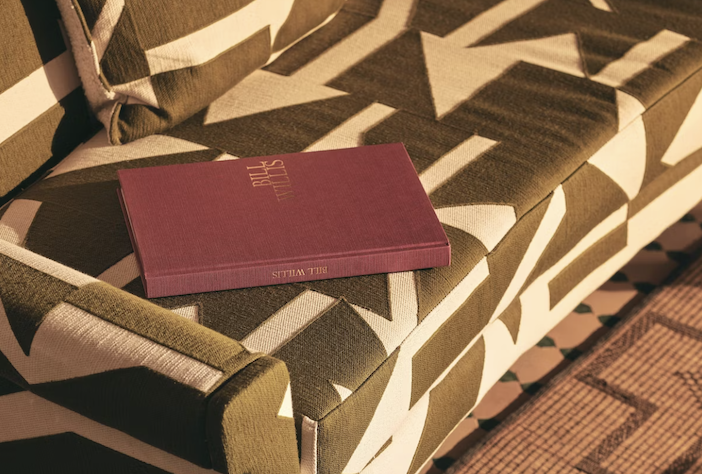
On arrival we’re offered small glasses of chilled milk steeped in orange blossom, and fat, sweet, sticky dates stuffed with almonds that provide a welcome sugar rush after hours on the road. On the coffee table in the lobby is a hefty tome chronicling the works of American designer and aesthete Bill Willis, a handsome green-eyed libertine that Marrakesh adopted as its own. Born in Memphis in 1937, after studying fine art in Paris and running an antiques shop in Rome, Willis wound up in Morocco in 1966, entertaining his friends Jean-Paul and Talitha Getty on their honeymoon. He never left.
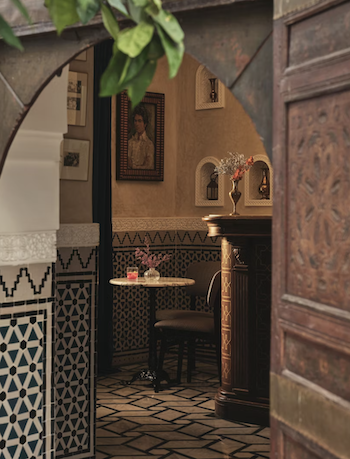 Known for his elaborate vaulting, opulent fireplaces, intricate tile work and polished plaster, Willis’ design aesthetic can be seen throughout the city, in the Maharaja-like splendour of Dar Yacout restaurant, whose flamboyant domed fireplace is inspired by the Taj Mahal, to the Palais de la Zahia, the Getty’s 18th century pleasure palace in the old medina, where Talitha would waft about in kaftans and throw legendary, opium-fuelled parties that went on for days.
Known for his elaborate vaulting, opulent fireplaces, intricate tile work and polished plaster, Willis’ design aesthetic can be seen throughout the city, in the Maharaja-like splendour of Dar Yacout restaurant, whose flamboyant domed fireplace is inspired by the Taj Mahal, to the Palais de la Zahia, the Getty’s 18th century pleasure palace in the old medina, where Talitha would waft about in kaftans and throw legendary, opium-fuelled parties that went on for days.
At his private residence, Dar Noujoum, Willis would rise at 4pm and host debauched dinners for glittering guests like Mick Jagger and Maria Callas. During his time in Marrakesh he designed the interiors for two properties owned by fashion power couple Yves Saint Laurent and Pierre Bergé, who made a happy home in Marrakesh, but his chaotic character and hard partying made Willis difficult to work with. Partial to cocaine binges – he kept it in a Mason jar – one wonders what heights Willis might have reached and the legacy he might have left behind had he not been high as a kite half the time.
Spanning seven interconnected riads, each of IZZA’s 14 rooms is bespoke, though shared design threads are weaved throughout, from keyhole arches to intricate plasterwork inspired by Willis’ distinctive aesthetic. The jewel in the crown is Yves, a luxurious dusky pink room decked out with retro furniture in a hat tip to the designer. Adding to IZZA’s charm is the hotel’s immaculately attired MD, Rémi Delpech, who hails from a family of Cognac makers and arrived at IZZA by way of the Hôtel de Crillon in Paris.
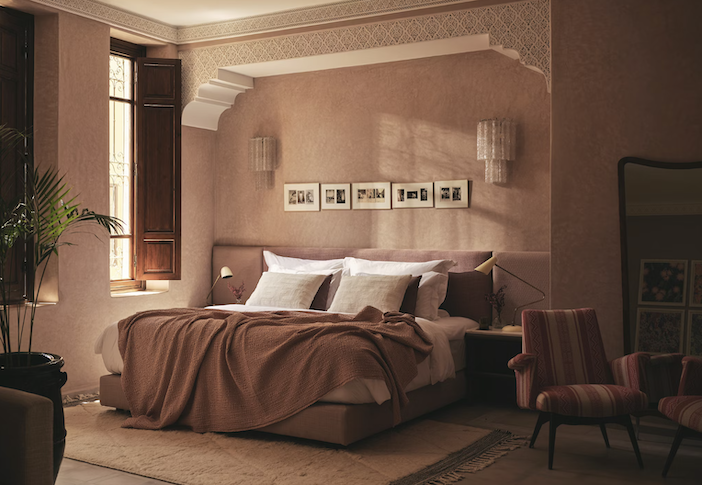
The roof terrace is a tranquil refuge boasting panoramic views across the city, which are particularly beautiful at dusk when the buildings are bathed in a soft orange light. We enjoy a long, lazy lunch under the shade of a pergola, feasting on crunchy crab croquettes dipped in saffron aioli, cooling cubes of pickled cucumber, and spiced aubergine caponata with stracciatella and fried capers. Devised by English chef Paul Weaver, the former head chef of diner deluxe Bob Bob Ricard in Soho, IZZA’s alluring menu fuses Moroccan classics with contemporary Mediterranean-inspired dishes with flair and finesse.
The hotel’s interiors also play with past and present, weaving traditional Moroccan touches with contemporary twists. From the emerald ‘zellige’ tiles lining the gold-brushed bar of the tearoom, to the fan-shaped tiles brightening the wall fountain in the courtyard, flashes of green lend a sense of continuity to the space. With its cooling plunge pools, glimmering lanterns and hidden nooks, the hotel exudes an air of vintage elegance. I half expect to bump into a love-struck Humphrey Bogart and Ingrid Bergman at Bill’s Bar, where Willis’s legacy lives on.
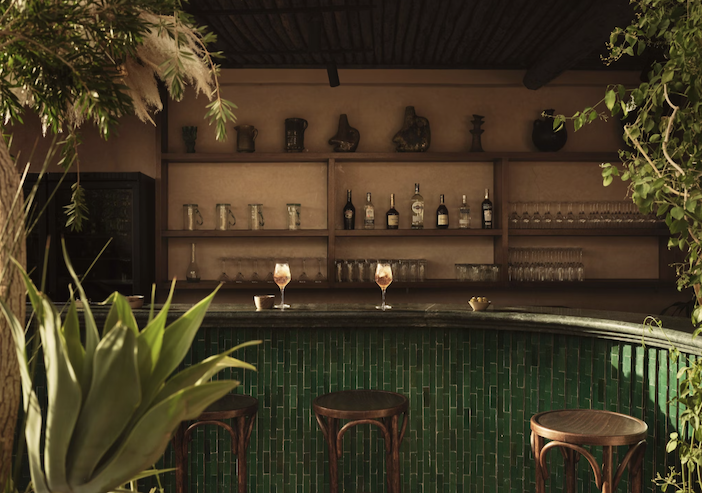
The small space is filled with wonderful black-and-white photos of the indecently handsome designer that capture his Byronic character and ability to blaze through a room like a comet. On pour you’ll find classic cocktails like the Old Fashioned and Manhattan sharing a menu with more daring concoctions like the Menara Margarita, which blends Tequila, Triple Sec and lemon with fiery ras al hanout syrup.
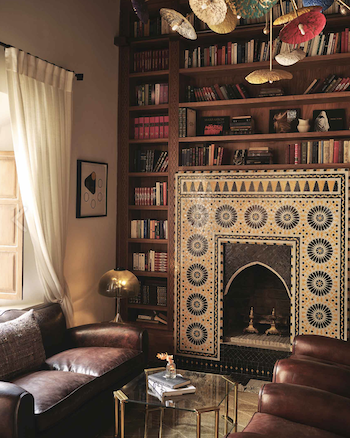 Boasting a Bakelite phone, bath big enough to hold a conference in, and a copy of The Little Prince by the bed, my room is named in honour of Moroccan photographer Leila Alaoui, whose portraits of local artisans brighten the reception area. A talented photographer with a keen eye for detail, Alaoui was just 34 when she was killed while on an assignment in Burkina Faso. Her untimely death makes her colourful portraits, which celebrate the cultural diversity of the Moroccan people, all the more poignant.
Boasting a Bakelite phone, bath big enough to hold a conference in, and a copy of The Little Prince by the bed, my room is named in honour of Moroccan photographer Leila Alaoui, whose portraits of local artisans brighten the reception area. A talented photographer with a keen eye for detail, Alaoui was just 34 when she was killed while on an assignment in Burkina Faso. Her untimely death makes her colourful portraits, which celebrate the cultural diversity of the Moroccan people, all the more poignant.
Walking back to my room after dinner at midnight, having feasted like royalty on achingly tender slow-cooked leg of lamb, fragrant monkfish tagine and couscous singing with citrus and spice, I chance upon the hotel’s library – a bibliophile’s paradise stocked floor to ceiling with interesting tomes taking in everything from fashion and photography to The Arbuturian’s own, Nick Hammond’s Around The World In 80 Cigars and Paul Bowles’ 1949 existential novel The Sheltering Sky, which I enjoy dipping into for its gritty depictions of Marrakesh and Tangier.
Home to over 300 original artworks, IZZA’s creative roots run deep. Founded by London-based tech firm Neon Adventures, the hotel is home to the largest digital and generative art collections in the world and showcases works from in-demand artists including Turkish-American new media artist Refik Anadol and Brazilian photographer Sebastiaõ Salgado, whose striking monochrome portraits add drama to the rooftop restaurant. IZZA’s owners also preside over Willis’s now crumbling Dar Noujoum, which took a hit during the recent earthquake that shook the city on 8 September. The hope is to turn the place into an institute and event space offering artists residencies to local and visiting creatives.
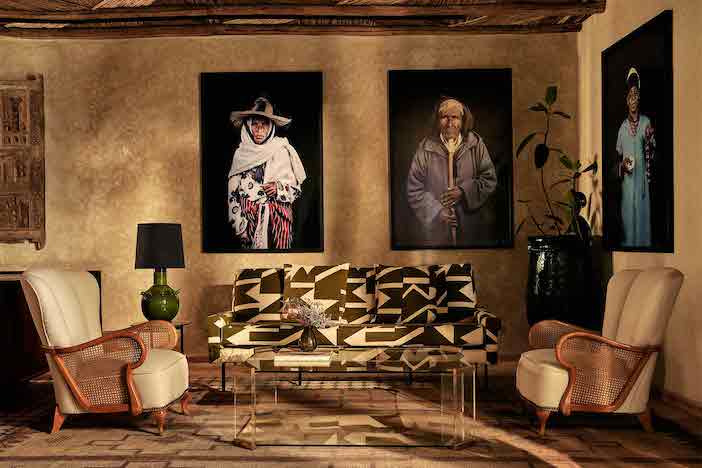
One morning we head out of the city to Al Maqam, home to one of Morocco’s leading mixed media artists, Mohamed Mourabiti. The November sun is hard and bright. Painted vivid brushstrokes of cyan blue, not a single cloud punctures its perfection. The air is sweet with the heady scent of jasmine. With its faded parasols and scruffy sun loungers, Al Maqam feels a bit like the Soho House that time forgot. Mentoring us for the morning is Amine, an animated potter who extols the virtues of clay and its ability to absorb our negative energy.
We while away a pleasant few hours throwing pots on the wheel and painting them the same electric blue hue splashed throughout French painter Jacques Majorelle’s botanical garden, where Yves Saint Laurent spent his twilight years. With its dusty pink façade and green wrought iron shutters, Mourabiti’s home recalls Impressionist Claude Monet’s house in Giverny, though whether by chance or design I’m unsure. Inside we wolf down oregano-flecked whipped feta drizzled with olive oil, spread generously onto crusty bread, which is sensational in its simplicity. In a storage room I spot one of Leila’s portraits of a water seller from the Atlas Mountains sporting an elaborate green headdress.
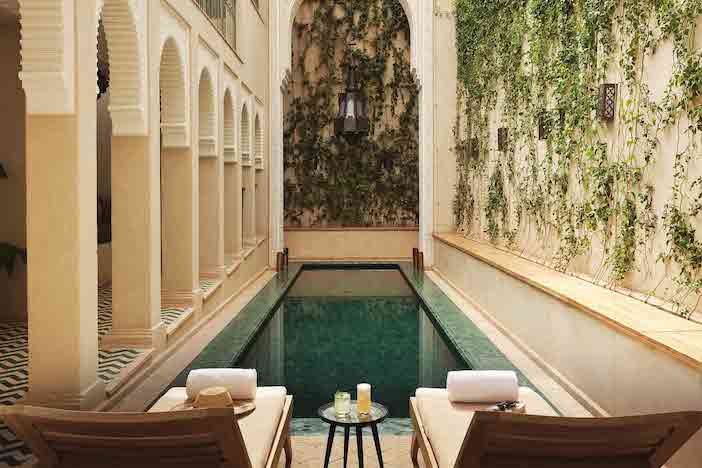
No trip to Marrakesh is complete without spending an afternoon ambling around the souk and getting lost in its labyrinthine streets, where, as Edith Wharton wrote in her 1920 travelogue In Morocco, “merchants sit like idols among their wares”. During my visit I spot a child tending to tiny chicks in a cardboard crate, the floor around him stained red from squashed pomegranates. Bored boys on bikes lurk in shadowy alleyways waiting for something to happen. After a few hours of haggling with slipper sellers, silversmiths and spice makers, I’m ready to retreat back into IZZA’s soothing embrace and the quiet of a shaded courtyard.
The best hotels cause a conundrum in the mind of the traveller in that they’re so comforting and cocooning, the desire to explore your local surroundings, or have anything to do with the outside world, is sapped from you, making activity of any sort, other than a light swim, long lunch or afternoon nap, a wrench. This feeling is heightened at IZZA, which provides a secluded sanctuary and welcome escape from Marrakesh’s madding crowds and the mayhem of the medina. Be warned though, once you’ve checked in and made yourself at home, you’ll need extraordinary amounts of willpower to leave.
Rooms at IZZA start at £140 per night and include breakfast, airport transfer on arrival and a 45-minute massage at the hotel’s spa and hammam treatment room. For more information or to book, visit IZZA.com

